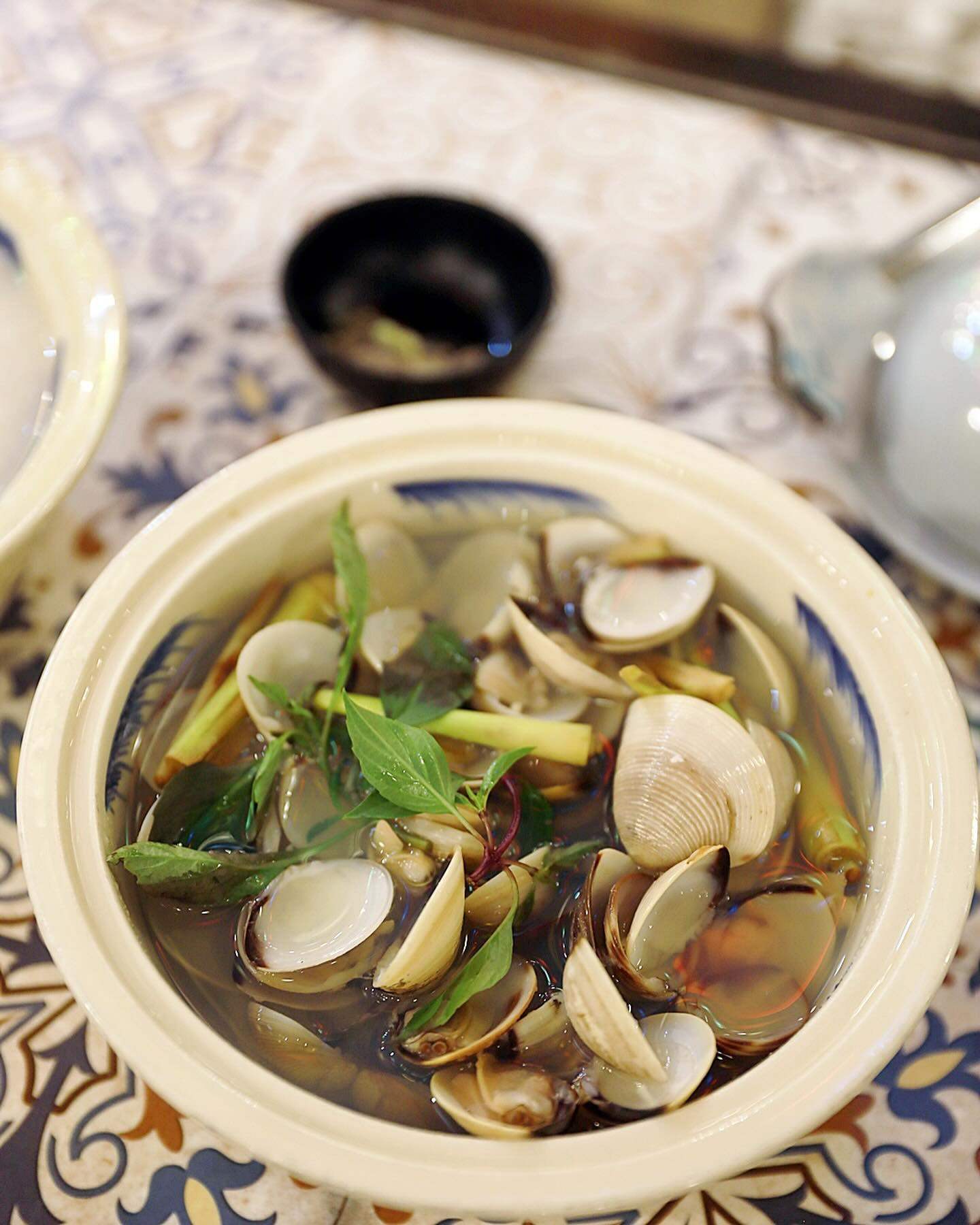By Doris Lam
Copyright scmp

Da Nang is a coastal city in central Vietnam reachable by plane in two hours from Hong Kong and three from Singapore.
Although not as famous as other Southeast Asian beach hotspots such as Phuket and Bali, it is close to some famous Vietnamese sights, including Hoi An, the Ba Na Hills and the Hue Imperial City.
Da Nang can be roughly divided into two main sections: the beach side and the city side. The former, filled with beachside bars and hotels, is popular with digital nomads and surfers. The latter is where locals congregate at 24-hour cafes, hole-in-the-wall food stalls and markets.
The Dragon Bridge traverses the Han River to connect the two sides and breathes fire on weekend evenings.
Visitors will eat well no matter which side they end up on. In 2024, the online travel guide TasteAtlas named Vietnamese cuisine among the best in the world, and dishes such as banh mi and pho are now famous around the globe.
The real star in Da Nang, however, is seafood.
One of the most iconic seafood-based dishes of the region is mi Quang, a rice noodle dish that can be eaten at any hour of the day.
“Nothing makes you feel like you’re in Da Nang like a bowl of mi Quang,” says Olivier Corti, executive chef and co-owner of Le Comptoir, a French fine-dining restaurant in the city.
Mi Quang takes its name from Quang Nam, the province previously next to Da Nang that recently merged with the city.
The noodles are typically served alongside a small amount of turmeric-infused broth and topped with one or more protein choices such as small to medium-sized shrimps – which diners are encouraged to eat whole, shell and all – fish, eel, pork, chicken and jellyfish.
Fresh herbs like basil, coriander and mint are usually served on the side, as well as chilli, boiled egg, shredded lettuce, lime and toasted sesame rice crackers.
The torn-up herbs mixed in with the noodles make the dish light and refreshing, while the broken-up crackers give the dish added crunch and nuttiness.
For places to enjoy mi Quang, Corti recommends My Quang Co Sau (397 Tran Hung Dao, An Hai Tay, Son Tra, Da Nang), a Michelin-recommended joint located by the Han River and owned by a Quang Nam native. “I go there when I crave the real deal,” Corti says.
The chef, who is originally from Lyon, France, worked in his home country as well as in Monaco and Hong Kong before moving to Da Nang in 2017.
Now, he runs Le Comptoir with his partner, the restaurant’s co-owner and sommelier, Myriam Moretto. Together, they offer a classical dining experience, with a menu that showcases a range of French techniques.
“I serve gastronomic versions of dishes that transport me home,” he says. “It’s dishes that remind me of long Saturday lunches like the quenelle de Lyon [a sausage dumpling from the French city] – but instead of baking it in sauce for 45 minutes, our version is topped with crystal caviar and paired with an intense crayfish sauce. We use almost 10kg [22lbs] of crayfish for four litres [one gallon] of sauce.”
Corti believes Da Nang’s true culinary heroes are found on the streets.
“The best chefs are probably the street-food mummies who work all night to deliver the breakfast rush. Those are the best chefs in Da Nang because they’ve been cooking the same dish for 30 years,” he says.
A go-to street food “mummy” that Corti loves? Hai San Chau Son 1 Chau Nga (21 Nai Tu 2, An Hai Bac, Son Tra, Da Nang) is a no-frills seafood joint where low metal tables and green plastic chairs spill onto the pavement.
“The cooks pick up the seafood from a small boat early in the morning,” Corti says. “The seafood is extremely fresh.”
The restaurant’s charcoal grill gives a smoky flavour to everything from oysters and clams to squid and bread. Off the grill, seafood hotpot, garlic butter shrimp and spring onion clams are popular choices.
Hai San Tuoi Song Ba Ro (115 Ly Tu Tan, Tho Quang, Son Tra, Da Nang) is another of Corti’s go-tos. It offers many types of seafood, from chilli crab and garlic oysters to cream-sauce-drenched prawns.
This spot is a little further north from the city centre, but its location, 10 minutes’ drive from Linh Ung Pagoda – Da Nang’s gigantic statue of Lady Buddha – makes it a perfect pre- or post-activity stop.
At the other end of the spectrum, Moc (26 To Hien Thanh, Phuoc My, Son Tra, Da Nang) is a tourist hotspot that offers a more comfortable dining experience. The restaurant, with its air-conditioned rooms and brightly lit interior, attracts queues so long that massage parlours have smartly set up shop across the road.
The restaurant’s range of seafood is impressive, from clams and crab to sea snails and oysters to scallops and sashimi.
But most diners gather around the tanks where they pick out live lobsters to be prepared behind the scenes. The crustaceans can be dressed in garlic butter, sweet and sour sauce, fried garlic, or black pepper sauce.
Banh xeo is another must-try dish in Da Nang. The regional speciality consists of yellow crepes made from rice flour, water and turmeric powder that are crispy on the outside and soft in the centre. They are folded in half to sandwich fillings such as prawn and chicken.
The crepes are accompanied by a plate of fresh herbs, lettuce and thin rice papers. To enjoy the dish, wrap a piece of rice paper around a bite-sized portion of the crepe along with herbs, then dip the parcel in fish sauce.
Corti recommends Banh Xeo Ba Duong (280/23 Hoang Dieu, Phuoc Ninh, Hai Chau, Da Nang), a banh xeo specialist with vibrant green walls and over 30 years of history. The restaurant also serves nem hue, meaty pork mince skewers grilled on lemongrass stalks.
Enjoy nem hue on its own, or wrap rice paper and herbs around the skewers in a similar way to banh xeo. Use the rice paper to twist the meat off the skewer in one swift motion, then dip the resulting wrap in the dipping sauce made of ground pork, garlic, shallot, peanut and other seasonings.
Remember to suck the lemongrass stalks afterwards so that their citrusy, floral notes complement the lingering smoky meat flavour.
For breakfast, do as the locals do and opt for a bowl of noodles. Rather than searching for beef pho while you are in Da Nang, try bun cha ca, a regional speciality noodle soup with fish cakes.
The orange broth typically gains its colour from tomatoes and fish or pork bones. Most restaurants offer a range of toppings for diners to choose from in addition to fishcakes, fresh prawns, crab cakes, slices of fish, meatballs and even Chinese doughnuts, or youtiao (which are great for soaking up the soup).
Bun cha ca is usually made with round rice noodles, but a variation made with thick tapioca noodles is also popular. Banh Canh / Quan Thu (29 Chau Thi Vinh Te, Bac My Phu, Ngu Hanh Son, Da Nang) gets busy at breakfast and lunch times as crowds gather for quick bowls of noodles.
If noodles for breakfast is not your thing, give bo ne a try. “It’s the Vietnamese answer to steak and eggs, served hot on a sizzling pan,” Corti says.
He frequents Bo Ne Khanh (41 Hoang Van Thu, Phuoc Ninh, Hai Chau, Da Nang), a humble restaurant with red plastic chairs. The menu is limited to a small selection of bo ne sets.
The full breakfast set includes a fried egg, a slice of beef and a large beef meatball on the piping-hot, cast-iron pan. Soup, a plate of fresh vegetables and a warm banh mi baguette are served on the side. Be sure to sample the restaurant’s sauces, featuring house-made chilli jam, and order an iced Vietnamese coffee for the perfect start to the day.
Outside traditional Vietnamese food, Da Nang’s growing popularity with Korean tourists and digital nomads has encouraged rapid growth in the international culinary scene.
Veteran Restaurant (8 D. Dinh Nghe, An Hai Bac, Son Tra, Da Nang), a Korean barbecue spot, is where Corti goes when he craves red meat.
“They manage to get some great quality meat at a very affordable price, and the service is always flawless,” he says. “It’s my go-to place after 10.30pm because it’s easy and convenient.”
For an authentic taste of Japan, Nagisa (3/F, 30 An Thuong 4, My An, Ngu Hanh Son, Da Nang) is a hidden gem of a ramen restaurant that Corti says has “quality ingredients, [a] calm setting [and] great lunch sets”.
Nagisa’s Japanese owner also runs Burger Bros downstairs in the same building, but spends most days working behind the ramen counter. Regular ramen and a small selection of snacks and rice bowls are available, but its tsukemen is stellar.
There are endless dining options to choose from in Da Nang, with new restaurants popping up next to long-standing family-run stores every week.
“Da Nang’s dining scene is like the city: growing fast, full of surprises and finding its own rhythm,” Corti says.



